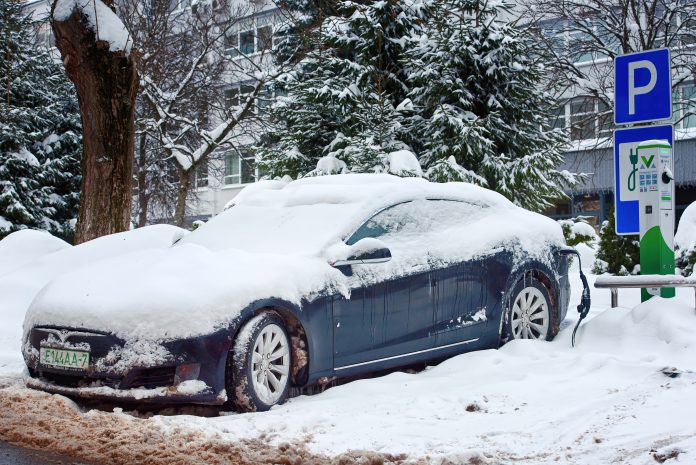During the major snowstorm that swept across the nation in mid-January, several news outlets reported that electric vehicle drivers had to compete with significantly reduced range and long lineups at public charging stations.
While compared to a gasoline-powered car, operating an electric vehicle in frigid weather presents additional obstacles. Alternative methods may be used to lessen the difficulty of driving an EV in the cold.
Chemical reactions in batteries are slowed down by freezing temperatures. It’s conceivable that you’ve encountered this with a standard automobile when the engine failed to start due to a 12-volt battery issue. With an EV, it’s the same. Their batteries operate better in warmer climates, and if the car is chilly, it will utilize some of its stored energy to warm the battery. Its battery must be used to power the heated seats, cabin heater, and other features of an EV. These problems can all work together to restrict its range significantly.
In frigid temperatures, drivers can expect a 20% to 30% drop in range. This means that, in subfreezing temperatures, for instance, an EV with a typical maximum range of roughly 250 miles could only have 175 miles.
Reporters at Edmunds discovered what EV owners can do to reduce the headache:
- Charge at home: Although most automakers advise charging your EV to 80% to prolong the battery’s life, you should consider charging to 100% in the winter to get the maximum range and counteract the decreased range. By charging at home, you can avoid using crowded or inefficient public fast-charging stations. –
- Maintain a full battery: Regular charging might help drivers prepare for unexpected travel delays or power disruptions. For example, even if you don’t absolutely need to, think about charging at home once a day.
- Preheat the battery and cabin: Preheating the cabin before you drive is one of the best winter driving tips for EVs. Preheating the car not only gets you comfortable but also warms the batteries before you go off.
- Drive efficiently: If your EV has an Eco drive mode, use it to drive as efficiently as possible during the winter. It reduces its power, which improves efficiency. Refraining from rapid acceleration is one of the best ways to drive efficiently if your vehicle lacks an Eco mode.
- Invest in winter tires: Replacing the all-season tires on an electric car with winter tires can significantly enhance the grip and braking on slick or snowy roads, similar to gas-powered vehicles. For EVs, several tire manufacturers specifically design winter tires.



